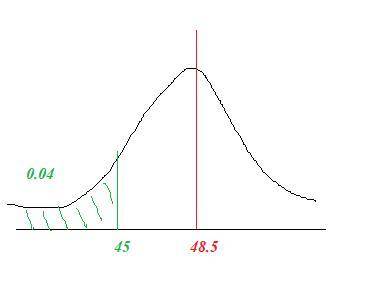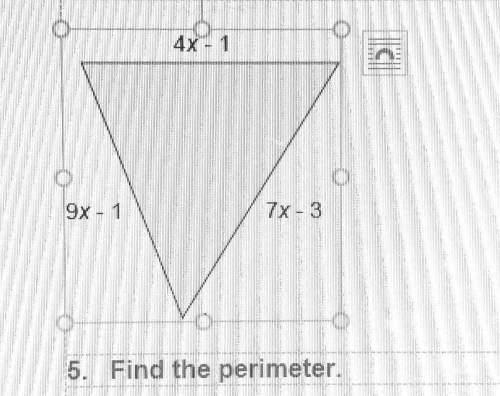
Mathematics, 23.03.2020 21:56 imichaelc1oy5t8i
Heated-treated parts are specified to have a hardness of at least 45 (lower specification limit). Any parts that are below 45 are too soft and have to be heat treated again at great expense. The hardness of heat-treated parts actually produced follows a normal distribution with a mean of 48.5 with a standard deviation of 2. (Note: sketch of the distribution helps the set up your calculation). What is the probability that a part is below the minimum specified hardness

Answers: 2


Another question on Mathematics

Mathematics, 21.06.2019 15:00
Let the mean of the population be 38 instances of from 6" - 9" hatchings per nest, and let the standard deviation of the mean be 3. what sample mean would have a confidence level of 95% or a 2.5% margin of error?
Answers: 1

Mathematics, 21.06.2019 15:30
What are the measures of ∠a, ∠b, ∠c and ∠d? explain how to find each of the angles. measure need asap
Answers: 1

Mathematics, 21.06.2019 18:20
Inez has a phone card. the graph shows the number of minutes that remain on her phone card a certain number of days.
Answers: 2

Mathematics, 21.06.2019 18:40
Airplane speeds are measured in three different ways: (1) indicated speed, (2) true speed, and (3) ground speed. the indicated airspeed is the airspeed given by an instrument called an airspeed indicator. a plane’s indicated airspeed is different from its true airspeed because the indicator is affected by temperature changes and different altitudes of air pressure. the true airspeed is the speed of the airplane relative to the wind. ground speed is the speed of the airplane relative to the ground. for example, a plane flying at a true airspeed of 150 knots into a headwind of 25 knots will have a ground speed of 125 knots. the problems below refer to static and dynamic pressure. static pressure is used when a body is in motion or at rest at a constant speed and direction. dynamic pressure is used when a body in motion changes speed or direction or both. a gauge compares these pressures, giving pilots an indicated airspeed. in problem #s 1 and 2, use the following information. the indicated airspeed s (in knots) of an airplane is given by an airspeed indicator that measures the difference p (in inches of mercury) between the static and dynamic pressures. the relationship between s and p can be modeled by s=136.4p√+4.5. 1. find the differential pressure when the indicated airspeed is 157 knots. 2. find the change in the differential pressure of an airplane that was traveling at 218 knots and slowed down to195 knots. in problem #s 3 and 4, use the following information. the true airspeed t (in knots) of an airplane can be modeled by t=(1+a50,000) ⋅ s, where a is the altitude (in feet) and s is the indicated airspeed (in knots). 3. write the equation for true airspeed t in terms of altitude and differential pressure p. 4. a plane is flying with a true airspeed of 280 knots at an altitude of 20,000 feet. estimate the differential pressure. explain why you think your estimate is correct.
Answers: 2
You know the right answer?
Heated-treated parts are specified to have a hardness of at least 45 (lower specification limit). An...
Questions

Chemistry, 18.10.2021 05:00


History, 18.10.2021 05:00


Mathematics, 18.10.2021 05:00

Biology, 18.10.2021 05:00


Mathematics, 18.10.2021 05:00

Computers and Technology, 18.10.2021 05:00


Mathematics, 18.10.2021 05:00

Mathematics, 18.10.2021 05:00

Mathematics, 18.10.2021 05:00


History, 18.10.2021 05:00

Mathematics, 18.10.2021 05:00

History, 18.10.2021 05:00






 and
and 






